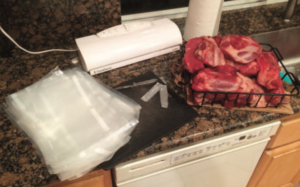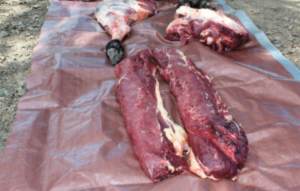
As we ease into the hunting season, it’s time to get things lined up for big game. Whether you’ve finally landed that coveted deer tag, are hiking the hills for bear, or just headed out on a guided pig hunt, pre-hunt preparation is the key to success. With fall and winter breathing down our necks, these are the things I do religiously to get ready for the season.
1 – PRACTICE, PRACTICE, PRACTICE
Along with the beginning of hunting season, we are also entering the season of excuses. Guys that show up after a trip saying they had a shot at a nice buck but missed. I’ve heard it so many times, I’ve started to respond with the same canned answer: “You should’ve practiced more.”
Shooting accurately is just like anything else — the more you practice, the better you’ll get. If your idea of preparing for a big game hunt is hitting the range once or twice before your hunt, you might consider adding a little more trigger time to your itinerary. After the range, head out to the wild and actually shoot like you’ll hunt.
There are no bench rests out in the wild and shots can range from prone, standing or sitting. Practice these setups and when the real deal is in front of you, you can bring back more photos of you and that treasured buck and less photos of a wilderness sunset.
2 – GET IN SHAPE
It doesn’t take much to get into hunting shape. If I’m planning a hunt where I know I’ll be putting in the miles, I’ll start a regular walking routine a month before I leave. Start walking around the block just to get moving. Then increase that distance every few days. You want to get back to your starting point having worked up a good sweat.
If you have a reliable set of hunting boots, make sure you hike with those on. Nothing ends a trip faster than getting blisters or having boot issues on your hunt. Wear the socks and boots you’ll be hunting in and when the time comes to hike those hills, you’ll be a ton more prepared to put in the extra miles where the big critters feel safe.
3-CARRY IN LIGHT
I hunted with a guy years ago on an elk hunt that had a pack that weighed easily 30 pounds be- fore he left camp. He had a meat-hanging gambrel, three or four extra knives, four boxes of ammo (see the PRACTICE, PRACTICE, PRACTICE section above), two jackets and a number of pointless things that he really didn’t need. After the first day, he dropped most of that gear back at camp.

There’s nothing wrong with being prepared, but to me, packing in light is smart and effective. I always go in thinking I’ll kill whatever I’m chasing.
My pack contains: a knife with several replaceable blades, surgical gloves, meat sacks, rope, a small piece of tarp, some snacks, one or two waters, a headlamp and a lot of empty space. This gear list has served me well and kept me from dragging so much weight around. Pack in light so you can extend your hunt and you can hopefully pack out heavy.
4 – DO SOME RESEARCH
If you’re unfamiliar with the area you’re headed to, get online and do some research. Searching through apps like OnX maps and Google maps are great for giving you an idea of what to expect terrain wise. Knowing what to expect goes a long way to mentally preparing for what lies ahead. Identifying hills, valleys and drainages can help tremendously with preparation.
If you can, get out before the season starts and do some scouting. Identifying animal locations and movement is very helpful when identifying travel routes and game trails. Really, nothing beats on-the-ground examination through scouting of the terrain and animal movement.
It’s also an excellent idea to familiarize yourself with a solid weather app and start looking it over a few days before you leave to see what your outdoor time will look like when you get there.
5 – NOW WHAT?!
You prepared, you’ve gotten in shape, you’ve left the kitchen sink back at camp and packed in light. Now you have an animal on the ground and the clock starts ticking. You need to process the animal so that the meat you’ve harvested doesn’t go to waste. Believe it or not, on the side of a hill, in the heat, is not the place to do this for the first time.

Ideally, you’ll have someone with you that has parted an animal out before. If you don’t, review this topic heavily online.
There are countless videos out there that show you how to traditionally gut your animal to cool it down, or how to process your kill using the gutless method. Either one works well and needs to be done quickly.
Despite it being dead, the body heat of an animal will spoil the meat very quickly. Spend the time looking over processing videos or asking veteran hunters about it. If you’re successful, your hunt should end with lots of wild meat for the freezer.
Prepping for any activity, in my opinion, is the key to success. As they say, luck favors the prepared.



